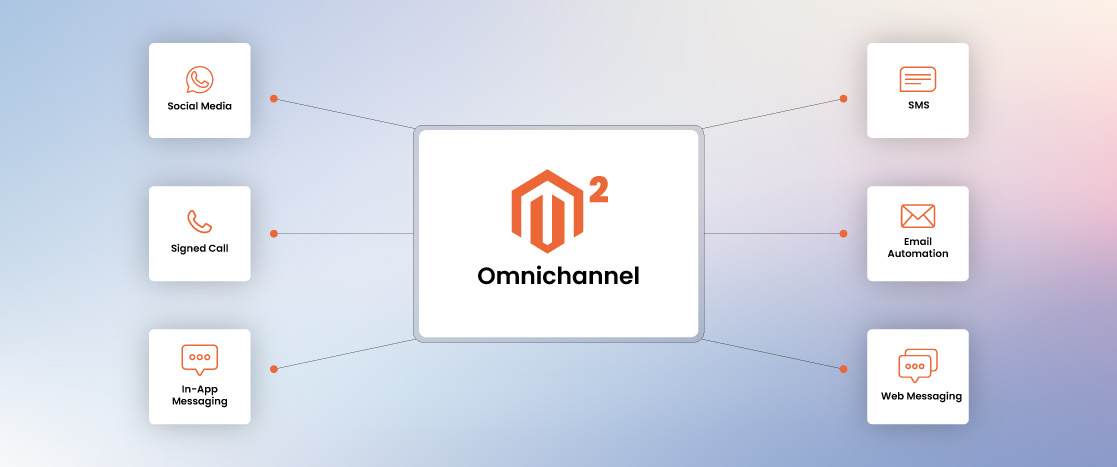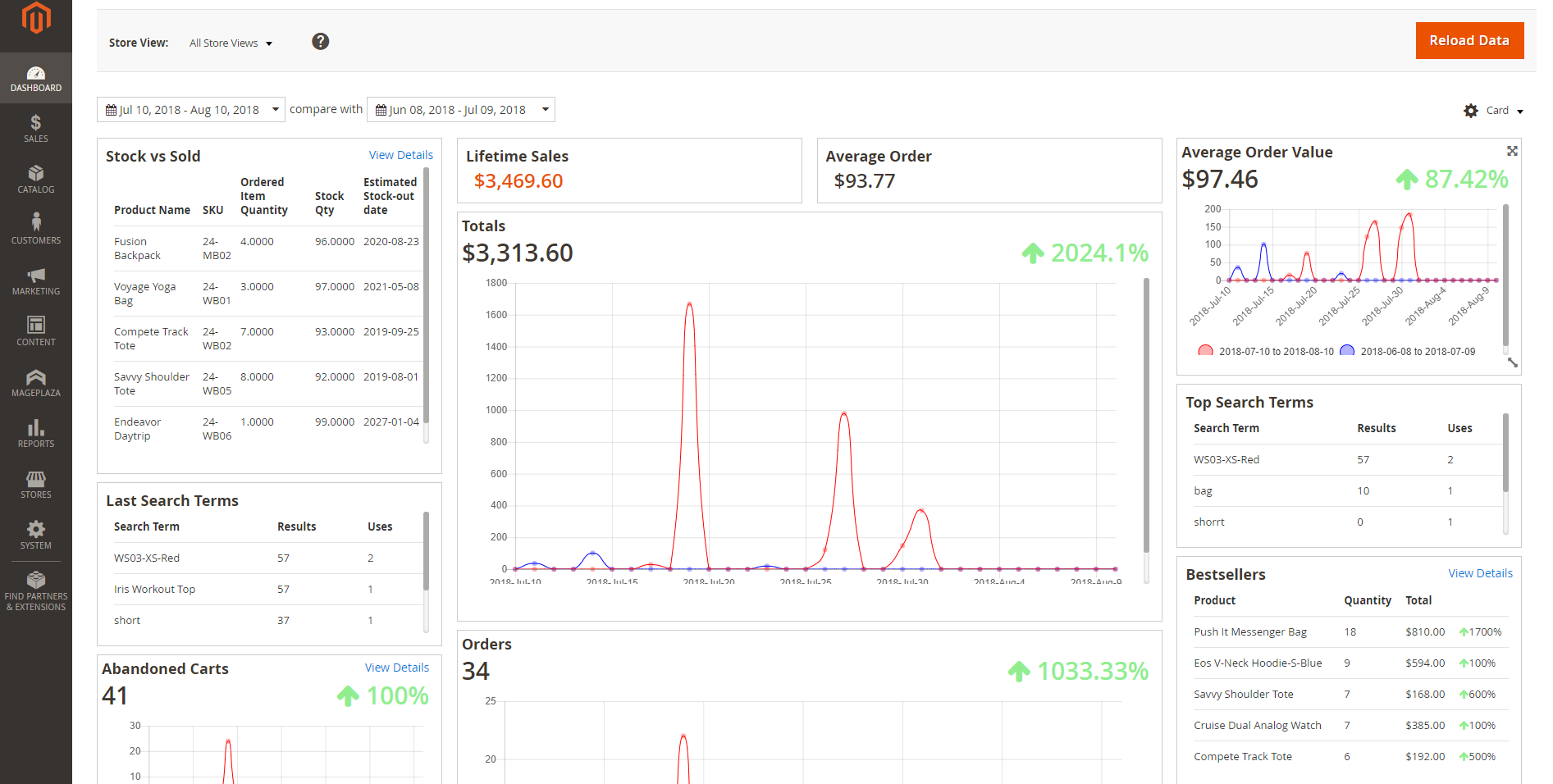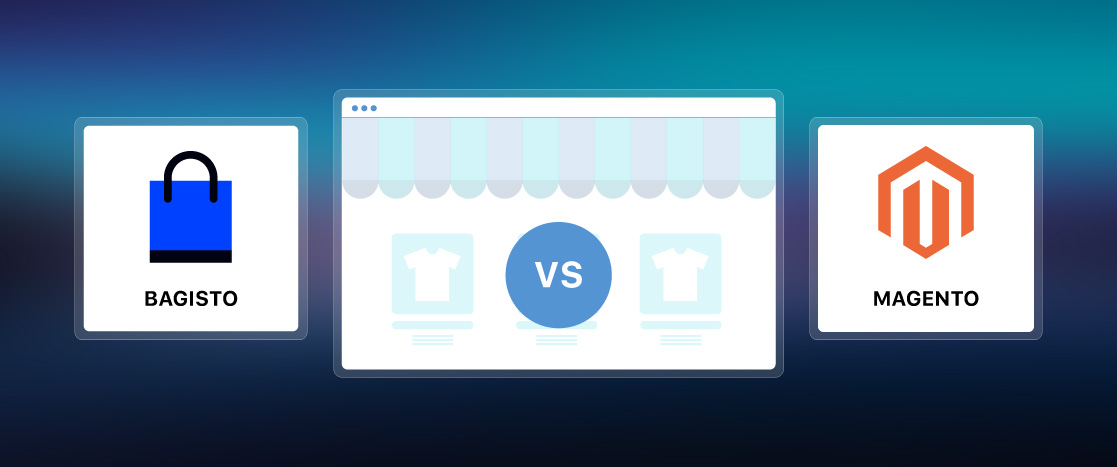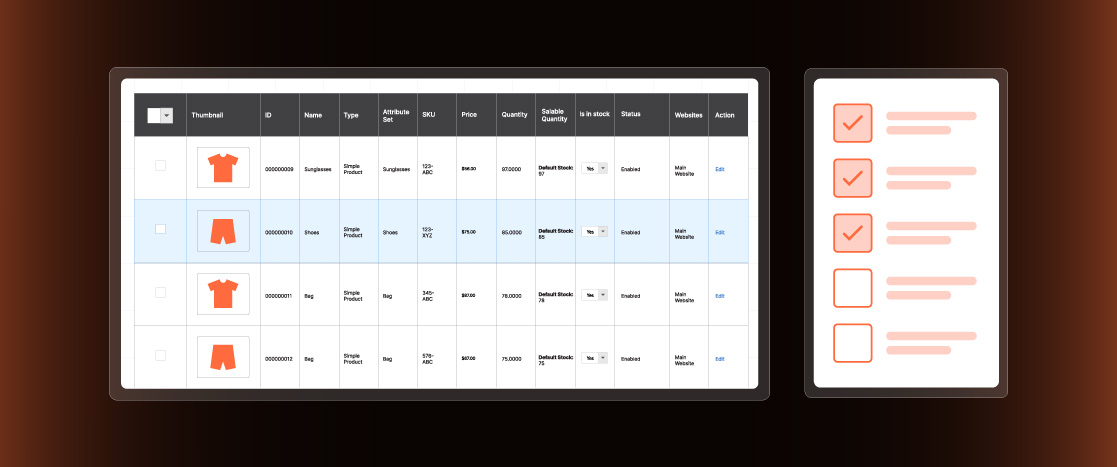
Magento Omnichannel Solutions and Its Impact on your Online Store
Nowadays, consumers are purchasing products online through different platforms.
For example, one customer might purchase a product from your Magento 2 store, another might prefer to purchase from your Instagram store, and a third one might buy from your Amazon store.
This above example only works if you have worked on all three platforms and ensured everything is current. Otherwise, only some of the conversions may be possible. This is the level of personalization and flexibility that an omnichannel solution provides.
Magento omnichannel solutions allow you to reach customers on all the platforms they may use to discover and purchase your products. The Omnichannel Magento 2 solution allows you to improve customer experience through personalized content and increased conversions.
This article will teach us more about Magento 2 omnichannel, how it works, and its benefits for your brand.
No CTA banner found for ID
What is Omnichannel Magento 2?
An omnichannel strategy involves setting up processes on multiple channels that your customers or potential customers use to discover and purchase your products. What does it look like when a customer orders in your e-store and picks it up from a facilitation center?
What channels are included in Magento 2 omnichannel?
Here’s a list:
- Online stores like Magento 2
- A dedicated application
- Brick-and-mortar store
- Internet of Things devices
- Social Media platforms such as Twitter, Pinterest, Instagram, Facebook
- Sales and customer service representatives
- Email and phone channels
- Newsletters (physical and digital)
These channels cover almost all touchpoints a customer may be interacting on.
What are the Benefits of Magento 2 Omnichannel?

Omnichanneling can have more than a few benefits for your store. Let’s look at some of these below:
Improved User Experience
Customers tend to stick with you for a long time when you are treated with the best service. Moreover, consumers are happy to pay a premium for a better overall experience.
According to recent research, brands with an omnichannel strategy see a 7.5% yearly decrease in cost per contact and 9.5% yearly revenue growth.
Enhanced Customer Data and Insights
When businesses collect data from different sales channels, they better understand customer behavior. With diverse data, they’ll have an accurate picture of business operations and can make better decisions.
One advantage of this is that it helps you manage inventory better. As people often search online before purchasing from a physical store, better insights will eventually help you gauge what percentage of buyers are following this pattern. This will help you better manage physical stores and online inventories. Statistics show that 81% of shoppers in physical stores search for things online before or while purchasing something.
Therefore, by having more data and an excellent analytical sense, you can better understand your customers to improve their experience and increase revenue.
Higher Sales and Revenue
According to research, implementing an omnichannel strategy helps retain 89% of shopping customers. This means that 89 out of 100 customers will come back to the shop from you again, reducing new customer acquisition costs and increasing revenue per customer.
Easy Complaint Management
An omnichannel Magento 2 strategy makes it easier for your customers to reach out with complaints and for you to resolve them as soon as possible. This adds to customers’s experience and increases their chances of doing business with you again.
Inventory Management (Multi-Channel)
Omnichannel business keeps you in operation when a particular channel fails. With the onset of COVID-19, we saw physical stores lose out and shut down while businesses that had set up their online presence continued working, some with higher demand than before.
Statistics show that campaigns run on four or more channels outperform single and dual-channel campaigns by 300%.
Hence, it is better to be safe than in today’s rapidly evolving world with new challenges. An omnichannel approach protects you against unforeseen issues like a pandemic.
How Does Magento Omnichannel Strategy Work?
The Magento platform is stable and efficient, providing the ultimate flexibility with various integrations and extensions, allowing you to operate seamlessly with different platforms.
This is an advantage when adopting a Magento omnichannel strategy, which requires you to be available on every medium your customer is available.
Let’s see what Omnichannel Magento 2 has to offer:
Third-Party Integrations

Magento has multiple third-party integrations that allow you to connect your store to other platforms easily.
One of the things this helps with is POS integration. You can easily integrate your POS data with your Magento store using an extension. You can use various extensions, like Magestore, Magefan, etc.
For a complete guide on connecting third-party integrations for POS data, you can check out our guide on Magento POS extensions.
Security
Magento 2 is a powerful yet secure platform with robust features that make it safer than other store builders.
That said, making your Magento 2 store as secure as possible so customers can shop safely is essential.
To ensure maximum security, make sure you implement the following:
- Get reliable Magento Hosting that ensures no hiccups in performance.
- Install an SSL certificate on your store. [Devrims offers these for free]
- Install security extensions like MageFirewall Security.
An omnichannel experience is only successful when security is at the forefront of your strategy. Hence, Magento 2 security is paramount, and we hope that following the abovementioned steps will help you achieve that.
Create a Progressive Web App (PWA)

One of the many outstanding features of Magento is the capability to create a PWA.
What’s a PWA?
It’s a web app that combines the features of your website (indexation and UI) with the features of a mobile app (like offline availability) to give your customers the best of both worlds without having to create an app from scratch.
You can set up a Magento 2 PWA using Magento extensions like Webkul Magento 2 PWA extension or Magento 2 Progressive Web Apps (PWA) Extension by Setubridge.
Having a PWA will introduce another channel to reach your customers and boost their experience. Per the research, PWAs can:
- Decrease bounce rates by 42.86%
- Increase customer engagement by 137%
- Boost mobile sessions by 80%
Integrating Marketplaces
The Magento 2 omnichannel requires you to be present on multiple channels.
Thanks to the easy API integration offered by Magento, you can connect your Etsy, Amazon, and other marketplace stores with your Magento 2 store.
You can use various plugins and extensions, such as Magento 2 Multi-Vendor Marketplace Solution by CedCommerce or Marketplace Multi-Vendor Module for Magento 2 by Cmsmart.
These solutions will allow you to operate stores on multiple marketplaces using the Magento store to manage everything from one window.
Robust Reporting

Tracking your data is also essential when managing a business across various platforms.
Inventory, costs, visitors, conversions, and more can be tracked and analyzed for insights that can help you improve your business.
There are various extensions that you can use apart from Magento’s own sales dashboard, including:
- Magento 2 Advanced Reports Extension by Mageplaza
- Magento 2 Inventory Report by BSSCommerce
- Magento 2 Advanced Reports by Mipler
The right analytics on Magento can help you gain insights to optimize your store further and improve customer experience.
Easy Tax Management
Magento makes setting tax rules and managing finances easy across different channels. Wouldn’t want to be all over the place with your cash flows in an omnichannel setting.
It is easy to set up taxes using the built-in Magento tax rules. If you want to go one step forward and automate entirely the taxation process, use the TaxJar Sales Tax Automation extension, which takes care of everything from calculation to filing the sales tax returns for you.
No CTA banner found for ID
FAQs about Omnichannel Magento 2
Is Magento 2 Suitable for Omnichannel Solutions?
Yes, Magento 2 is an excellent choice for omnichannel solutions. It’s flexible, scalable, and packed with features that allow businesses to connect different sales channels, such as online stores, physical shops, mobile apps, and more. Magento 2 helps manage inventory in one place, keeps everything synced in real time, and offers tools to personalize the customer experience. With the help of extensions and third-party integrations, Magento 2 can be customized to manage and improve an omnichannel strategy, boosting both customer engagement and business performance.
What are the Four C’s of Omnichannel?
The Four C’s of omnichannel are key elements that make a successful strategy:
- Consistency – Ensuring a consistent brand experience across all channels (website, mobile app, in-store, etc.), so customers get the same level of service no matter where they interact.
- Customer-Centricity – Focusing on customers’ needs and wants, providing personalized and relevant experiences at every touchpoint.
- Convenience – Making shopping easy and flexible for customers, giving them options for shopping, paying, and receiving products (e.g., click-and-collect or home delivery).
- Connectivity – Connect all sales and communication channels smoothly so customer data, preferences, and history are available across different platforms.
Conclusion
Magento 2 omnichannel solution is the modern strategy you need to implement for a better business.
The Magento omnichannel strategy allows you to use your Magento 2 store to reach customers who feel comfortable shopping. This not only improves the customer’s experience but also increases sales revenue.
For more such helpful Magento guides, keep following the Devrims Blog.





